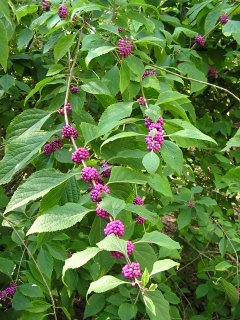I've finally gotten back out into the garden again, spending several hours just restoring order in the back yard over the last two days. I still have serious work to do in the front yard, but I don't think that's too bad for a garden the size of mine, especially considering that I've hardly set foot outside for almost a month now.
Before I go any further, though, I HAVE to mention the activity in the butterfly garden - there are so many butterflies, moths, carpenter bees, wasps, and flying creatures of all sorts that it feels like the very flowers themselves are flying as I stand and watch.
On a more somber note, for the first time as I work, I really feel like I'm preparing the garden for someone else. I'm making the edges a little neater, being a little more rigorous in cutting back, being more careful to remove tiny weed seedlings, and generally being more "J" than I normally am as I garden.
I find myself trying to converse with the gardener who will (hopefully) come after me....
"Sorry about these variegated artemesia - they get out of hand so easily in this bed. Be sure to keep them pulled out."
"I'll always wonder about the gripeweed in the yard. I thought it was such a pretty plant when I first saw it (a mimosa seedling?!) that I left it to 'see what it would do'. Would it be as widespread if I'd been less tolerant and more vigorous in pulling it out right away?"
"What do you think about this variegated vinca major? I agree. I think I'll pull it out and save you the trouble. The bed will look much neater this way."
"Should I grub out all of the pokeberry? The mockingbirds go crazy over its berries and it is so pretty, but I understand why you might not want it around."
I sure hope the next owner likes to garden; despite losing so many pines this summer, the yard has really started to come together. The blue spiral ginger is blooming beautifully and putting up several strong new shoots. The arborvitae fern is starting to fill in, becoming a graceful mat against the deep mulch. The Florida anise is almost as tall as I am now, and looking lush and healthy after such a misshapen start to life. Speaking of misshapen, the oriental chain fern has finally put out a few fronds on the right side and is almost completely balanced now. Its large-scaled daintiness looks fantasic next to Miss Lily's sturdy peacock gingers. The Grape Sensation gaillardia is purplishly spectacular, and the Knockout roses are head-high and absolutely covered with burgundy new growth, fresh buds and fluorescent pink flowers.
I could go on and on, but I'd be belaboring the point.
One last verbal picture, though: the wild beautyberry by the back shed is so loaded with brilliant magenta berries that it gleams richly in the dappled shade. I literally stopped in my tracks when I first saw it this week, its gracefully arching, heavily laden branches swaying drunkenly in the slightest breeze.

By the time we leave, those berries will have passed through the digestive system of a variety of birds and they will have been deposited, with a healthy dose of fertilizer, all over the local area. I have to believe that at least one or two will carry the genetic wealth of their parent and grow to create grace and beauty and bounty somewhere nearby, no matter what happens to their parent in this garden.







